Interested in learning more about dairy goat breeds? Here are the top 5 dairy goats for small homesteads!
Next to chickens, goats are the most common animal added to a small or urban homestead. They have the ability to provide you with milk, meat and fiber depending on the breed you choose. Today I am going to focus on the 5 best dairy goat breeds for the small farm or homestead.
This site contains affiliate links. If you make a purchase using one of these links, I may earn a commission. Please see my disclosure page for more information about cookies collected and our privacy policy.
When choosing your breed you need to consider a few basic questions:
- How much space do you have to devote to your goats?
- How much milk would you like to get each day?
- What are you planning on doing with the milk?
Once you know the answers to these questions you can begin looking at the different breeds and decide which would fit best with your needs.
Related Reading: The Quickstart Guide to Raising Goats
5 Best Dairy Goat Breeds for the Small Farm
Nigerian Dwarf Goat
The Nigerian Dwarf goat is a miniature breed, but also one that produces a lot of milk for it’s size. It is one of the top choices for those homesteading on a small piece of land.
They can give from 1-2 quarts a day- which is pretty impressive considering they are only around 18 inches in height!
Their milk is also one of the highest in butterfat which ranges anywhere from 6-10%. That means their milk is very creamy and makes delicious cheese, ice cream and yogurt. Because of their size they make great goats for kids as well as those in a more urban setting.
Nubian
Nubians are a medium to large sized goat with adorable cute floppy ears. They come in a wide variety of colors and patterns and have the ability to produce up to 2 gallons a day, with the average being closer to 1 gallon a day. They have one of the highest butterfat contents of the standard dairy breeds at 4-5%.
If you need a lot of milk and plan on making cheeses or soaps, Nubians can’t be beat. They can be a bit loud at times, I call ours crybabies, so they might not be right for those who live in subdivisions and make sure you neighbors won’t mind before bringing them home. Nubians are my personal favorites!
Alpine
Alpines originated in France and are a steady, dependable goat. They are medium to large in size and are very consistent milk producers with one of the longest lactation cycles.
They average over 1 gallon of milk per day with a 3.5% butterfat content.
Alpines come in almost any color imaginable and are adaptable to almost any climate. The average size of an Alpine doe is 135 lbs.
LaMancha
LaManchas are a medium sized goat that are most easily recognized by their lack of ears! They have a friendly, easy going temperament and are very hardy animals. LaManchas are good producers with an average of 1-2 gallons per day, with a butterfat content around 4%.
Personally, I like floppy ears, but I have heard many LaMancha owners say that if you give them a chance you’ll fall in love and be hooked on them forever!
Saanen
Saanens are the largest of the dairy breeds and are often considered the Holstein of the dairy goats. Saanens can produce a lot of milk- up to 3 gallons per day- with an average production closer to 1.5 gallons per day. While they do produce a lot of milk the butterfat content is low compared to some of the other breeds.
At 2-3% butterfat the Saanen’s milk will not seem as creamy and will not produce as rich of cheese or yogurt. These girls are big, so you will need to make sure you have enough of a pasture for them to stretch their legs in and a fence strong enough to withstand a larger weight.
Saanens are usually all white in color and very mild mannered. This is the breed we started with- on a 1 acre lot in a subdivision!
Related Reading: 5 Overlooked Goat Breeds
Each breed is a little bit different. If you are very short on space or only need enough milk for fresh drinking, Nigerians might be the best way to go. If you need a large quantity of milk to make yogurt, buttermilk, cheese, soap or just to feed a large family you will probably want to go with one of the standard breeds.
If you want to know more about some of the other goat breeds, such as those for fiber and meat, check out my Complete Guide to Goat Breeds.
If you are new to goats, I recommend reading up as much as you can before you purchase. You can find a lot of articles here on The Free Range Life that will teach you about goat care and be sure to check out The Busy Homesteader’s Goat Management Binder– it’s full of to-do lists, checklists, record keeping sheets, and resource pages that will get your new goat herd off to a great start!

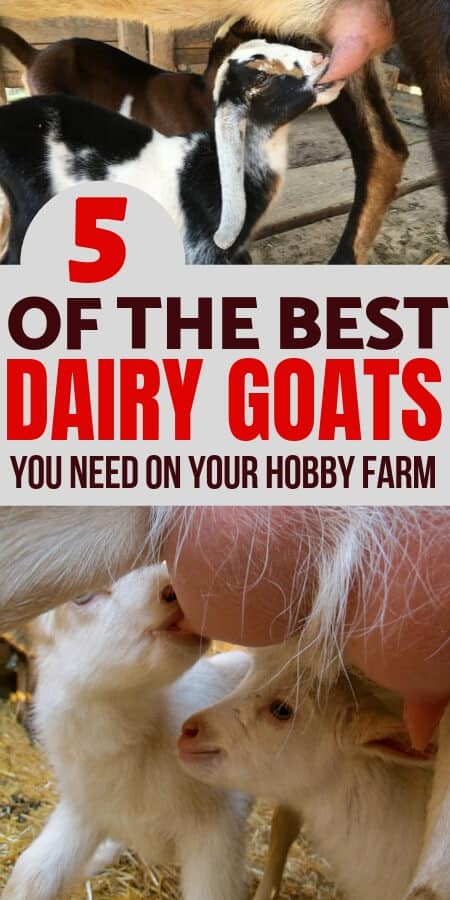
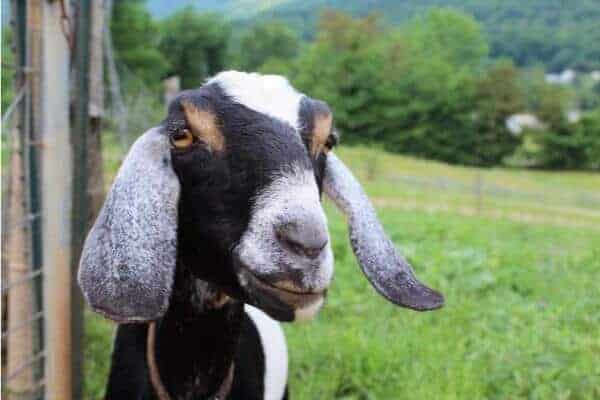
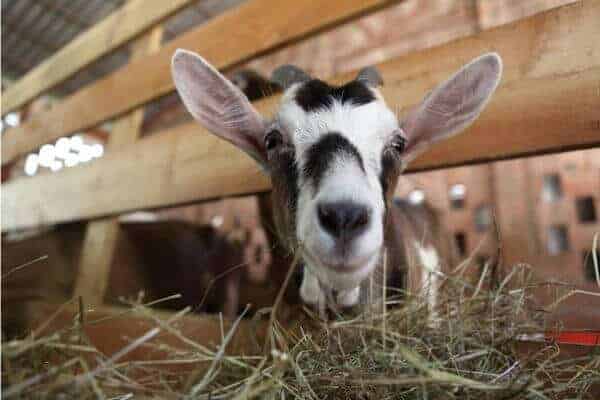
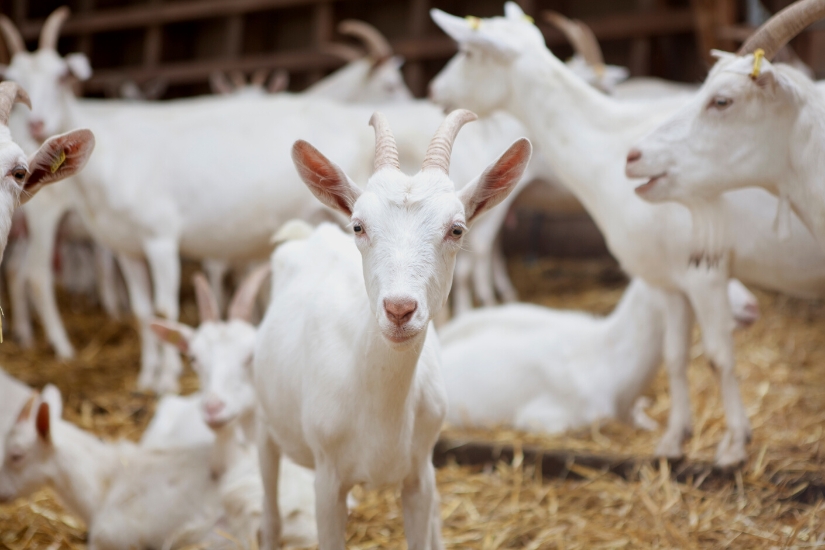
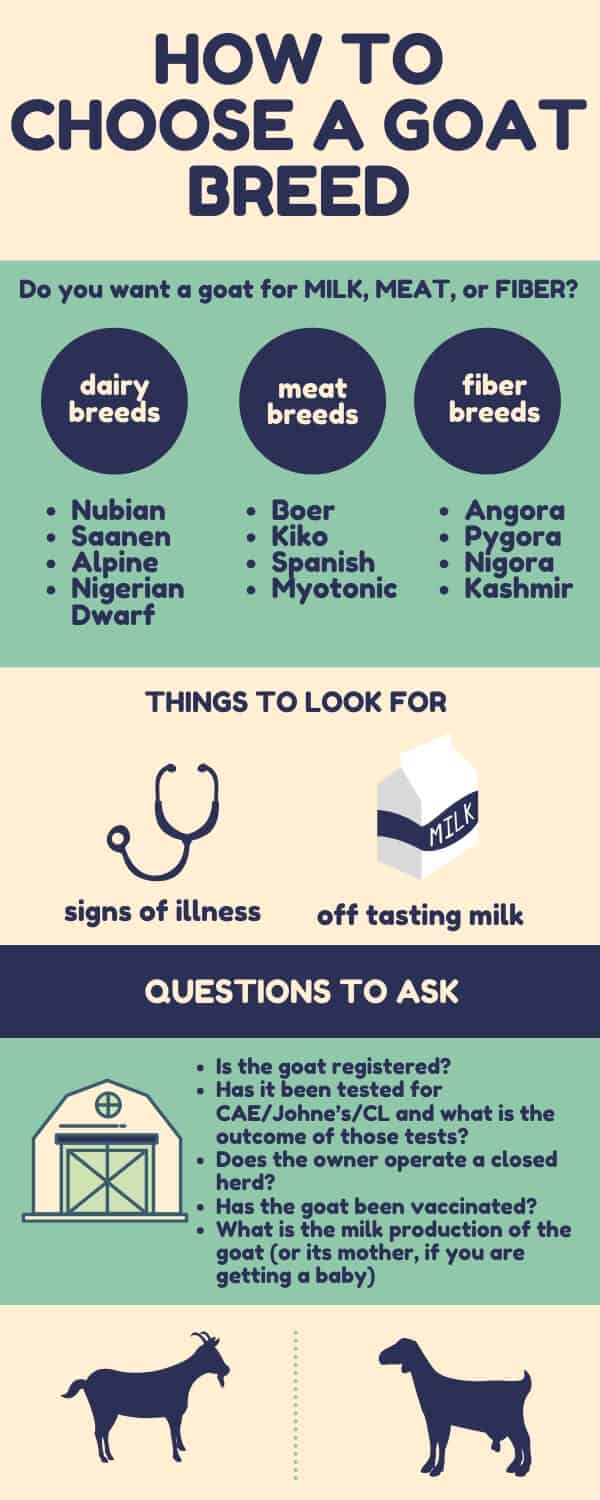


We’ve been discussing getting a milk goat! -Marci @ Stone Cottage Adventures
I love this post. Thanks for sharing.
Love this, but from my own experience with 2 Niggies, we only got at peak 2 cups of milk per day…I can’t figure out how everyone else gets more. I must be doing something wrong!
Our Saanens were not from good milk lines (they were hasty craigslist purchases!) and they didn’t even give 1/2 gallon a day….we paid for quality milkers when we bought our current Nubian does!
HI
If u want more milk from one goat up to 5 litter then I recommended to you purchase beatl goat from pakistan
Hussain!
Whats the prices of Beatl Goat at your destination. We are interesting to purchase it in bulk size if the prices is reasonable. Send some further details
Please let me know the price
We have had Nubians and Alpines for milking and goat packing!
What is Goat Packing? Newbie here…..obviously! :)
Great post, we have talked about getting goats for milk, and help cut the grass. This is very helpful, guess I have to create a goat board now. Thanks for sharing on Tuesdays With a Twist.
One of the main reasons we got goats in the first place was for weed control- especially poison ivy! We figured we’d milk eventually, but it wasn’t the main reason. Thanks for commenting!
does the poison ivy transfer through the milk?
Nope! There’s actually been some studies that show that drinking milk from a goat who has eaten poison ivy will help build immunity to it! Though watch the udders and touching legs when milking- the oils could be there is they have been walking through a large patch
I used to get terrible poison ivy reaction when milking my Toggenburg after she’d cleared out our infested walls of the weeds. I took to wearing gloves.
Great post! We are hoping to add goats to our farm this spring or summer. We do want a dairy goat, so this will help us to determine what type. Thanks!
Going to get goats the summer..Guess we will start with Nigerians and see what happens…Thanks for the information..
We love and raise Kinder goats! Lots of creamy, rich milk, amazing for soap and cheese, etc. Dual purpose for meat.
We looked into Kinder goats but couldn’t find many around our area.
Do you have any pictures of that type of goat? I am searching types for dual purpose?
It doesn’t have to be a dual purpose breed to do what u want a meat breed can be milked and a milk breed can be butchered
Great info, Thank you for linking up with the Clever Chicks Blog Hop- I will be featuring you this week, so please feel free to grab a featured button for your blog!
Cheers,
Kathy Shea Mormino
The Chicken Chick
Congratulations, you were picked as featured post from Simple Saturdays Blog Hop! Don’t forget to stop by and grab your button and we look forward to seeing you again this week! Kat
How about Kinder goats as a compromise, best of both worlds goat?
I’ve read about kinders, but never owned them :)
Great post. We’ve been contemplating the Nigerian Dwarfs but are still a little unsure if it’s the direction we want to go. :/
Mini nubians are becoming popular. We have a herd and love them. It’s a cross of Nigerian dwarf and Nubian. Amazing milk!! Get about a gallon a day with good milk lines. Milk is sweet and creamy!!
The Oberhasli should be on your list. These beautiful medium sized goats are alert in appearance with friendly, gentle dispositions that remind me of a dog. Oberhasli produce a sweet-tasting milk with a butterfat content of around 3.5 to 4 percent. With their striking looks, they also have plenty of appeal as lovely pets and bramble mowers. Powerful rear legs help the Oberhasli excel as a pack goat, with the proper training.
We had a Ober as our herd sire for years. He was a wonderful, loving goat.
I am very much interested on dairy goat raising. I would like to know the availability of frozen semen from those five breeds you have been recommended.
Thank you.
I am looking into small goat or small sheep must be gentle personality easy to care for and produce sweet milk for my family. Are sheep more gentle than goats? And small size is important because of feed cost. Also very important is the cost of worming and such. Polled would be best cause I don’t want to remove horns or transport to get. What sheep are best for milking and don’t have to be sheared ?
I would say a Nigerian Dwarf is your best bet for a goat- small size, gentle, good milk. I don’t know too much about sheep since I’ve never raised them. Hair-sheep breeds do not need to be sheared.
There are very few polled goats. The only way to have hornless goats is to disbud them at a week old or so. Right now I have 10 goats. I can’t bring myself to do the deed myself, but I load all the babies in my Subaru and drive 60 miles to a friends place ( a long time goat owner) and she does it. The 2 times I have waited too long to disbud, I’ve been sorry because horns are dangerous to goats and people alike, they get stuck in fences and a horned goat will bully the other goats who don’t have them.
Pygmy and
i need some saanen goat semen
We breed Kinder® goats. Their milk by volume is less than a big producer like their relative the Nubian, however the butterfat content is higher and they tend to be much quieter than Nubians. Thankfully! I love that our goats are hardy. Sturdy and do fairly well for meat. Dressing out at up to 60%. Nigerians have itty bitty teats and are scrawny, not worth butchering.
I wish Kinder goats are on the list. They are a great dual purpose breed. Their teats are bigger than Nigerians and the they produce more milk, high butterfat content, plus of course they are also a meat goat.
I Breed with the boer Bok goat and the red Kalahari Goat…..but its very dry in our region, Kinder Goats I would love to breed with it….but where can I find them??
is the environment in india is good for those breeds
I have a Saanen and she did produce over a gallon per day. Wasn’t as pleased with the taste of her milk as compared to the Nubian or LaMancha. I can’t seem to get her bred for some reason. She’s not too old and had kids when I got her. Don’t know what I’m doing wrong.
Looking for help have an alpine and her milk is bitter and nasty tasting, and not much fat at all in her
milk. Any suggestions?
do you have a male goat nearby? I’ve heard the hormones a female produces (and comes out nasty tasting) when a male is present. Is there a way to keep them separated?
Feed, feed, feed can mostly be the answer. Garbage in Garbage out.
Top quality hay, alpha or good grass. If you need good milk its the key
How quickly do you cool the milk? You cannot cool it to quickly. The longer you wait the quicker it turns.
Which breed is giving maximum milk?
Saanen is the top producer but have a low butter fat and protein. I suggest going with a toggenburg or Alpine they can be just as high producer as a Saanen but have a better butter fat and protein
I am a homesteader and me and my wife also home school our kids 3 of them and we have chickens pigs goats turkey and ducks rabbits and a horse and we live in a tiny house and it works off solar and wind turbine and we are on five acres and we also have an aquaponics system to raise veggies all year long building a root cellar here soon and love the line of goats on here our goats are alpine and Nubian
Nice post, pls kindly guide us on where to get these breeds
In my whole time on a dairy goat farm I have never seen a Nubian give over a gallon per day. They also tend to dry off after 2 months of milking, not a dairy breed in my book. What about Toggenburg? They are very hardy and great producers, I have seen some out produce a saanen and having a higher butter fat and protein like an Alpine.
I’m new farmer from Rustenburg I like Lamancha so powerful
I just got 2 new registered LaMancha after 3 months of deciding what breed is best they are the sweetest girls and make a lot of milk about a gallon there not as small as a nigerian and not as big as saanen. I recommend them to anyone out there looking for a standard lovable breed
I am considering getting goats to make cheese & yogurts. In order for a goat to produce milk, do they need to have nursing young or is there a milking breed that does not have to birth? I heard there was but don’t know if it is true. Thanks for input.
You did not mention the lactation curve. Usually there is rise from kidding to 10 weeks, corresponds to the growth of the kids. Then it levels off then gradually decline, as the kids start eating solids. The does should be milking best at this time up to 5 months until she freshens. Please refrain from using gallons or quarts. With the foam it is hard to determine exact level. Weight is a more acceptable measurement. Thank you.
We have a small holding on the outskirts of George and we are looking at getting goats for our own milk. My youngest daughter (11yrs) is the one who will look after them (she is currently doing chickens and has pigs, horses and donkeys which she is great with). She is really pushing me for Nigerian Dwarf, but I am struggling to find local breeders. I would also consider Toggenburg or Alpine as we want milk with a higher butterfat content. I am really happy to listen to any advice on how to start up and please can you recommend ethical breeders, who sell goats with good genetics, that we can get in touch with? Many thanks
We really liked our LaMancha. As a kid we had Alpines and it seemed you got a little goaty taste in the milk. I much prefer the LaMancha milk.